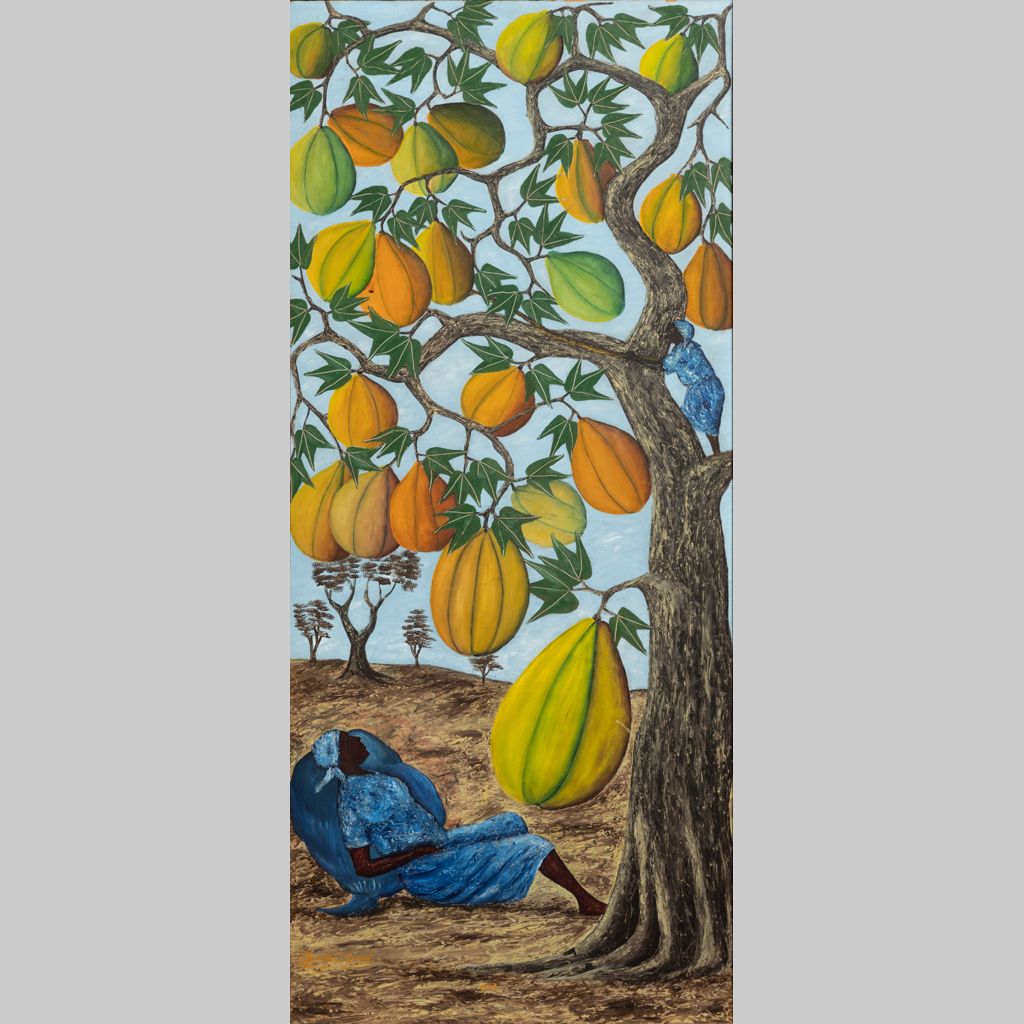Jasmin Joseph (1923–2005)
Landscape with Gourds, c. 1965–75
Oil on beaverboard
McMullen Museum of Art, Boston College, Transferred from Pine Manor College, 2022.70

Nancy Netzer
Inaugural Robert L. and Judith T. Winston Director, McMullen Museum and Professor, Art History

Born into poverty in Grande-Riviere-du-Nord, Haiti, Jasmin Joseph was working in a brick factory when he began carving terracotta sculptures. He used the first proceeds from sales of his sculptures to become literate. By 1950, Joseph had converted from Voduo to Protestantism, become a lay priest, and abandoned sculpture for painting. The McMullen’s work comes from a series begun in the 1960s depicting brightly colored fruit bearing trees growing in a barren landscape. He titled several of these paintings, some with figures, Tree of Life (see images).
In the present painting Joseph fills the frame with a calabash tree, a tropical plant common in Haiti that produces large, round green gourds that become increasingly yellow orange as they ripen. He adds two women in traditional rural dress with headwraps. One, resting on the ground, looks up at the tree. The other, dwarfed by the vast tree, stands on one of its branches while harvesting.
Within Haitian culture calabash trees, called kalbas kouran (“running calabash”) and their fruit are highly valued. The gourds’ hard outer shells are dried, hollowed, carved, and decorated by craftspeople for use as utensils, bowls, decorations, masks, and even musical instruments like maracas and the sacred rattle, asson, emblematic of the Voduo priesthood.


